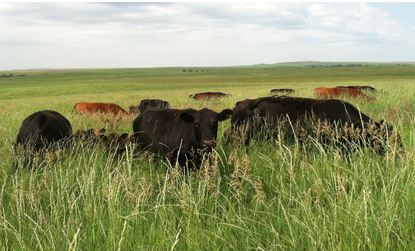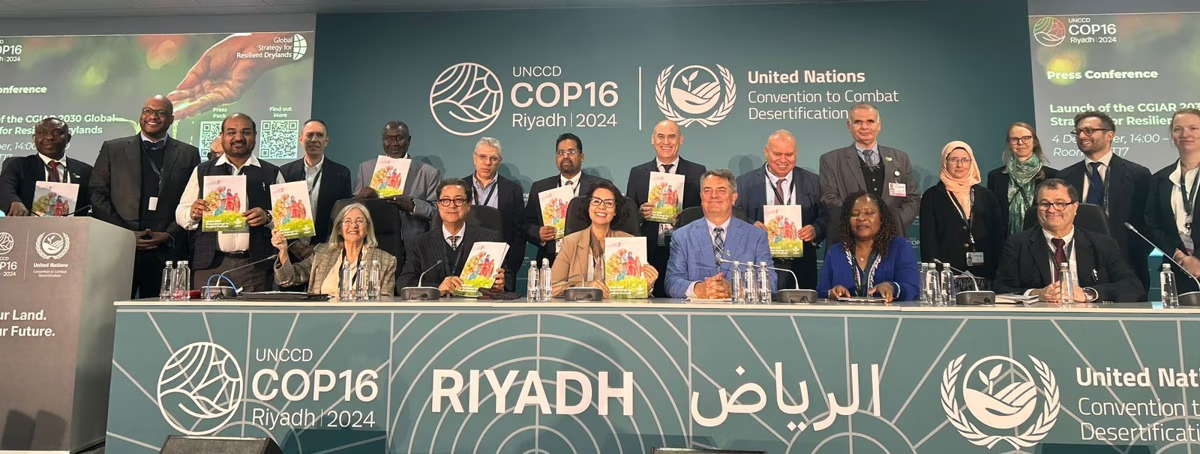



Sustainable Beef Starts With Grass
Defining sustainable beef may be hard but in South Dakota this surely means ranching cattle along lines of good land ethic and grazing cows.
This is the point Pete Bauman is making to his producers across the state following several recent opportunities to consider what sustainable beef is and how it affects farm management.
Global Roundtable for Sustainable Beef

Mr Bauman writes that much of the recent discussion on sustainability was spurred by the March report from the Global Roundtable for Sustainable Beef. While stopping short of defining sustainable beef, the report did offer five core principles of sustainability to consider including: natural resources; people and community; animal health and welfare; food; and efficiency and innovation.
'Triple Bottom Line' Approach
Further, they went on to promote the concepts of the ‘triple bottom line’ approach to sustainability in regards to social responsibility, environmental soundness, and economic viability. In the end, the report acknowledges the complexities involved in trying to define what sustainable means at a local scale.
Fast forward to July 8 in Rapid City, South Dakota, where for two and a half days we were privileged to hear from partners representing beef producers, conservation organizations, government agencies, educators, and national processors and retailers on what sustainability means in relation to South Dakota’s livestock and grassland industry.
The workshop was hosted by the World Wildlife Fund in partnership with the South Dakota Grassland Coalition. Early on, it became obvious that sustainability would not be easily defined at this gathering.
What came out of this meeting was an underlying tone of respect and admiration from the corporate partners for our grass and beef producers and an acknowledgment by all that significant challenges do exist, even in these relatively good times of profitable beef.
Defining Sustainability
The corporate partners had no desire to define what sustainability might mean for our backyard. Rather, they preferred that we as South Dakotans define what sustainability means for South Dakota. Sustainability not only implies good intent but also an understanding of actions, impacts, and improvements.
Technically, Webster defines sustainability as: of, relating to, or being a method of harvesting or using a resource so that the resource is not depleted or permanently damaged or relating to a lifestyle involving the use of sustainable methods.
Not bad, but in truth the word sustainability means something different to everyone when referring to the grass and beef industry. To some it means they have a constant supply of product. To others, it means they’ve achieved a desired state of success in production methods. Still to others, achieving sustainability is simply not enough.
They want to do more than just sustain, they want to expand, improve, and increase profitability in dollars, time management, natural resources, and family life. So, was the meeting a failure because sustainability remained undefined? Quite the opposite! Although there was not a specific definition of what sustainability is, it was relatively easy for the group to define what sustainability is not.
As a general consensus, sustainability for South Dakota’s livestock industry is directly dependent on ensuring the future of our native and non-native grasslands through ethical use and protection from threats such as conversion and degradation.
Diving deeper, sustainability in South Dakota will hinge on principles of soil conservation, minimizing erosion, and ensuring water quality (and availability?). Simply put, we need to champion our grassland resources as the core to a sustainable future for ourselves, our kids, and our dinner plates.
Grazing with the Guptills
We took a break from the meeting room to visit a couple of grazing operations that are utilizing different management models to achieve ranch sustainability. Pat and Mary Lou Guptill and their children run an intensive grazing rotation on a portion of their ranch near Quinn, SD.
While their ranch is primarily comprised of introduced (tame) grasses and legumes, their goals and management philosophies point them toward continuous restoration and improvement to achieve sustainability.
Cattle enjoy fresh grass at the Guptill Ranch near Quinn, South dakota - Photo Courtesy of Pete Bauman
Leaving the Guptill’s, we visited the Shorty Jones family ranch near Midland. This multi-generational, multi-family ranch also was focused squarely on care of the land and retention of grasslands as a top priority. Both the Guptill’s and the Jones’ operations put a premium on animal well-being, even though they utilize different methods in achieving their animal welfare goals.
The Guptill’s and Jones’ consistent views on the sustainability of soils, grass, animal health and family values easily outshines minor differences in tools or application methods, suggesting strongly that what sustainability is has much more to do with the principles of a good land ethic than it does with ear tags, branding techniques, or fly control.
It All Hinges on Grass
None of it matters without grass under foot!! As we continued through the agenda, we participated in well-moderated panel discussions focused on threats to grasslands and perspectives on the beef supply chain. In both cases, corporate partners shared honest opinions on economic drivers, food safety, and food security while listening to and ultimately agreeing with the broad consensus that ensuring profitability, safety, and security hinges on grass.
In addition, the national retailers threw the honest challenge back to South Dakota to continue to work in partnership between our in-state interests to define what makes South Dakota beef sustainable and help create the messages necessary to move our sustainably raised beef products out to the marketplace. Ultimately, what I heard is that there is room for all types of operations in this arena.
Whether you are backgrounding or finishing, raising seed stock or experimenting with grass-finished beef, the underlying tone is that South Dakota’s success in beef is dependent on our ability to increase the value of our grasslands and reduce land uses that are incompatible with the long-term sustainability of our landscapes. In light of this, it is important that producers think critically about the individual role of their beef operations in the greater landscape.
To help this process, there are more opportunities and information available today than ever before for producers to get educated and get involved in partnerships. Achieving and going beyond sustainability will require taking advantage of these resources and opportunities.
What Can Be Done to Make Beef More Sustainable?
How does one begin to become sustainable? I suggest starting with low risk, high return investments based on information and education. Visit SDSU iGrow, SD NRCS, US Fish and Wildlife Service, SD Game, Fish, and Parks, or the SD Grassland Coalition websites and explore what is available for landowners in regard to assistance with grassland management.
Consider joining the SD Grassland Coalition and/or taking advantage of their great programs such as the annual Bird Tour, Leopold Tour, and ranch tours. Participate in affordable education opportunities such as SDSU Extension courses and programs, SD Grassland Coalition’s Grazing School, or local range, pasture, or grassland events.
Finally, take a kid out on pasture and give them the freedom to explore and ask questions…who knows, you might discover that you need answers to those same questions. Sustainability need not be overwhelming, but it does require action. It starts with those of us who rely on South Dakota’s grassland resources….most of us do.



